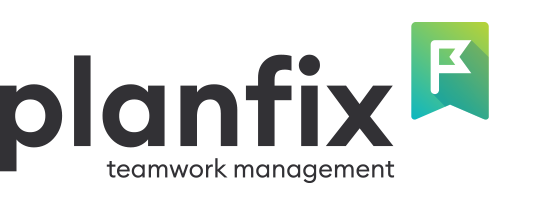
Task management comprises various stages that ensure the effective and efficient completion of a variety of projects or responsibilities. These stages guide you through the entire process, from the initial idea of a given task to its completion, and ensure that your team doesn’t overlook any steps or items of importance. Following these stages can significantly optimize your workflow and business operations online, increase productivity, and help you achieve your goals more precisely. Let’s take a closer look at the stages of task management so that you can better understand how each one contributes to a task’s successful completion
5 Phases of Task Management
The five stages of task management are initiation, planning, execution, monitoring and control, and closure. These stages are similar to those seen in project management. However, task management focuses on smaller, individual tasks rather than large-scale projects. Nevertheless, each stage is critical to the smooth completion of a task. Let’s examine them in detail.
Task Initiation
Task initiation is the fundamental stage in identifying and defining the task at hand. This stage involves endeavouring to understand the task’s purpose, scope, and objectives. A proper introduction ensures that everyone involved knows what exactly needs to be achieved and why. For example, if the task is to develop a new marketing strategy, you might immediately define the target audience, key messages, and desired impact. This clarity can help to better align your efforts and resources toward the stated common goal.
Task Planning
In the planning stage, you and your team draw up the “roadmap” for achieving the task’s objectives. This includes task planning, setting goals, describing steps, allocating resources, and setting deadlines. Effective planning is the backbone of any task’s success, as it provides a clear and structured approach to achieving the desired outcome.
SMART Goals

In task planning, it is crucial to stick to SMART goals. The acronym SMART stands for Specific, Measurable, Achievable, Relevant, and Time-bound. For example, instead of stating a general goal such as “increase sales,” a SMART goal might state something to the effect of “increase sales by 10% in the next quarter by launching a social media campaign.”
CLEAR Goals
You can also use CLEAR goals, an acronym that stands for Collaborative, Limited, Emotional, Appreciable, and Refinable. An example of a CLEAR goal might be: “Collaborate with the sales team to create a time-limited promotional offer that appeals to customers emotionally, is broken down into manageable steps, and can be refined based on feedback.”
If you follow these guidelines, you can significantly increase the likelihood of a given task being successful. Detailed planning also includes creating a Gantt Chart timeline, setting milestones, and assigning responsibilities. Where the former two involve breaking down the overall project into manageable segments, the latter focuses on making sure every aspect of the project is accounted for.
Task Execution
Task execution is the stage in which you actually carry out your plans. During this phase, you and your team execute the tasks according to the plan and ensure that all resources are used effectively. This is where the actual work takes place, so it’s important to work in a focused, organized manner throughout.
Choosing a suitable software for task tracking is crucial during execution. Comprehensive modern online task management software like Trello, Asana, or Planfix can help organize the team and ensure that tasks are executed as planned. They not only offer task status transparency, but can help you identify potential bottlenecks or problems early on.
Task Monitoring and Control
Task monitoring and control focus on tracking the progress of the task and making any and all necessary adjustments to stay on track. In this stage, you and your team should rely on Key Performance Indicators (KPIs) and Critical Success Factors (CSFs) to measure both progress and performance.
KPIs are quantifiable metrics that indicate how well the task is progressing toward its goals. For example, if a task’s KPI is to deliver a certain number of deliverables within a specific timeframe, monitoring would focus on making sure these targets are met and any deviations are corrected immediately. Meanwhile, CSFs are those critical elements that you must achieve in order for the task to be successful. At this stage, data tags play a vital role in organizing and categorizing data, allowing you to filter and track specific KPIs for more precise monitoring.
Effective communication is also crucial at this stage. This means keeping stakeholders informed of your progress and changes while ensuring that everyone involved is on the same page and can make informed decisions.
Task Closure
The final phase is task closure, which is where you and your team formally conclude the task. This includes reviewing the task’s results, documenting the knowledge gained, and acknowledging the contributions of all those involved. Proper closure not only ensures that all objectives have been met, but can provide valuable insights for future tasks. For example, after a marketing campaign, the closing process might involve analyzing the campaign’s success and identifying any areas that might have been improved.
Task closure is an excellent opportunity to evaluate what was successful about the task and what was not. This reflection helps identify best practices and avoid pitfalls in future tasks. It also gives the team a sense of achievement and closure, which can help emphasize the importance of their efforts.
Simplify Your Routine with Planfix Task Tracking Software
Planfix offers a comprehensive solution for managing tasks at every stage. Various workspaces allow teams to organize and focus on specific projects or departments, enhancing collaboration and efficiency by providing tailored environments for different tasks and goals. With Planfix software for task tracking, you can streamline initiation by easily creating and defining tasks. Meanwhile, the planning stage can be significantly simplified thanks to a suite of tools designed to help you setting smarter goals. During the execution phase, Planfix’s tracking features help ensure tasks stay on track, while the platform’s comprehensive reporting features allow for real-time progress monitoring, enhance task monitoring, and control.

Finally, tools for documenting results and sharing feedback help make the task closure process easy, effective, and informative
Planfix offers a variety of features to suit each organization’s needs, from simple task lists to sophisticated project management solutions, allowing you to easily delegate tasks, set deadlines, and monitor progress. Set up access for employees and contacts so they can see the tasks, files, and contacts they need. With Planfix Access, you can precisely control who sees what, ensuring that sensitive information remains secure while empowering your team to work efficiently. The software also integrates with other tools and platforms, enabling you to easily consolidate information and manage tasks from a single interface.
Best of all, Planfix offers different plans for different needs, from basic to advanced features, making it a versatile tool for businesses of all sizes.
Stages of Task Management FAQ
What Are the Stages of Task Management?
The stages of task management include initiation, planning, execution, monitoring and control, and closure.
Each stage ensures that tasks are completed effectively and efficiently, thus providing a systematic approach to task completion.
How Do you Set a SMART Goal?
A SMART goal is specific, measurable, achievable, relevant, and time-bound.
For example, a SMART goal could be: “Increase the number of visitors to the website by 20% within three months through targeted SEO strategies.” This goal is clear, measurable, and has a fixed timeframe, all of which make it easier to achieve.
What Is the Difference Between a Task and a Project?
Task management focuses on individual assignments or small groups of duties, whereas project management deals with larger, more complex undertakings that consist of multiple tasks and require comprehensive planning and coordination.
Projects often have more comprehensive goals and longer timelines compared to individual tasks.
Final Thoughts
Understanding and implementing the five stages of task management can significantly improve productivity and efficiency. By following structured steps from initiation to closure, you can ensure that you and your team have what you need to complete tasks successfully. Software for task tracking such as Planfix can further simplify this process by providing the necessary support at each stage. Whenever possible, you should use these steps and tools to optimize your workflow and achieve your SMART goals more easily.

